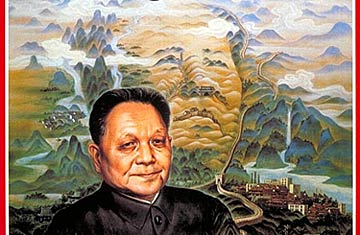
(12 of 20)
The net impression, after weeks in the countryside: China's farms are on the mend; peasants are eating again; a few are even getting rich with rows of chicken coops, private stalls and little carpenter shops.
THE POETRY OF NUMBERS
Industry is enjoying a greater boom, and to China's planners, it is the measure of the country's ability to enter the modern world. Chinese industry is the ultimate challenge to tomorrow's system of world trade, and sooner or later, America must adjust its economy to China's as it tries to adjust to Japan's.
Chinese leaders love to talk of industry, rippling statistics over their stories as satin merchants used to ripple silks over their hands. Probe at a Chinese official and figures immediately begin to flow: the largest cotton industry in the world today, 18 billion sq. yds. annually (6.6 billion in the U.S. in 1981); steel production up from nearly zero 40 years ago to a projected 40 million metric tons this year (1983 projection for the U.S.: 77 million metric tons). Television sets (6 million), washing machines (2.5 million), refrigerators, a precious luxury (only 100,000) trickling out of new factories. None are yet good enough for export, but wait. Already a Shanghai factory ships watches as far away as Singapore, of quality to match the Japanese. A new multiplex cable factory, rising in Chengdu under American direction, will be able in the next few years to meet not only the needs of China's missile systems but also of the urban complexes, where telephone systems are still primitive. On and on goes the poetry of numbers, as planners celebrate the recovery from the dreary years of the Great Leap Forward and the Cultural Revolution.
The theory of the new responsibility system blankets industry too. Industry is "responsible" to make what people need and to make a profit. Follow this theory, however, down to the assembly lines or the rolling mills, as one does, say, in Wuhan, with its famous iron-and-steel works (capacity: 3 million metric tons a year). Questions pucker. The national plan does not provide enough raw materials to keep this Wuhan installation running at full capacity. Later one learns that the steel industry has managed to misdirect its objectives, so that 20 million tons of steel lie rusting in warehouses.
Another question follows — that of "technology transfer." The Wuhan works use Japanese and German mills, and the Chinese have begun to ship steel mills of their own design to more backward countries in Africa. Still another question occurs as one paces the high catwalk above the steaming rolling line. What do these people get paid? Sixty Chinese yuan a month on the average, less than $8 take home a week per worker. Double that to include hardship bonuses, medical care, low-cost housing, schools. Call it $20 a week with fringe benefits for a Chinese worker. How can American steelworkers compete, when their wages (plus fringe benefits) run $22 an hour and they work with old equipment?
Follow the big industrial boom further, to textiles and garments. The largest cotton mill in all China sits in Chengdu, in Sichuan. It makes a profit producing for the China market. Its workers get paid perhaps $25 a month in take-home pay. The China market absorbs all the flower-printed cloth that
